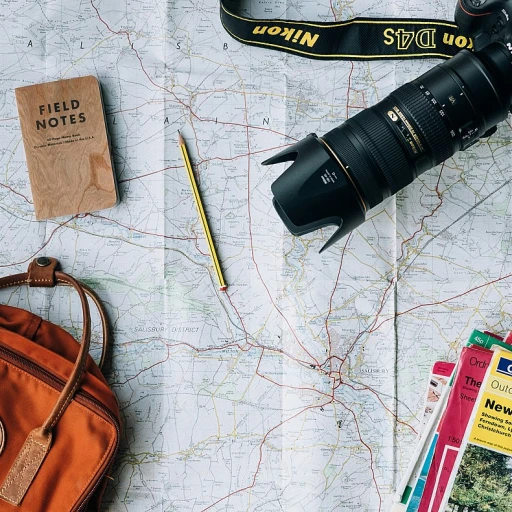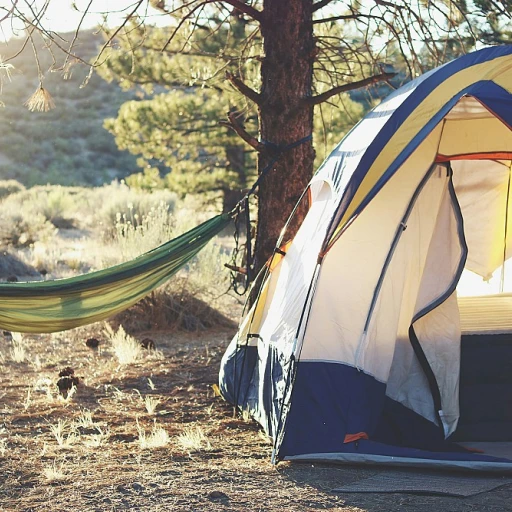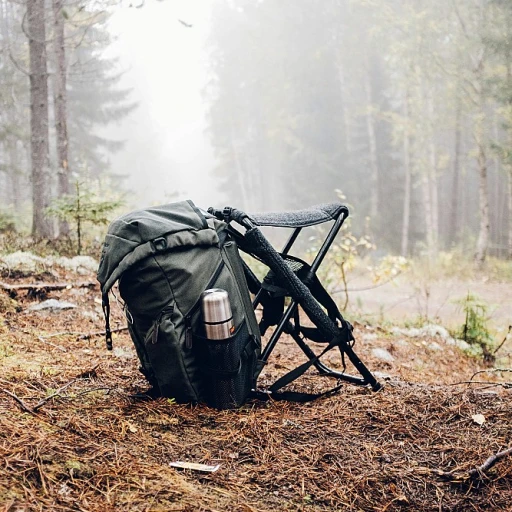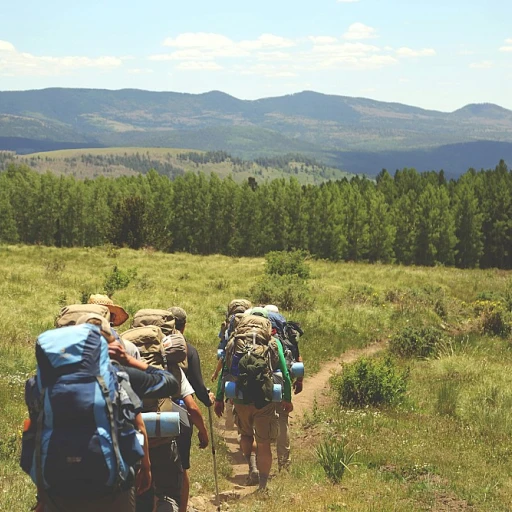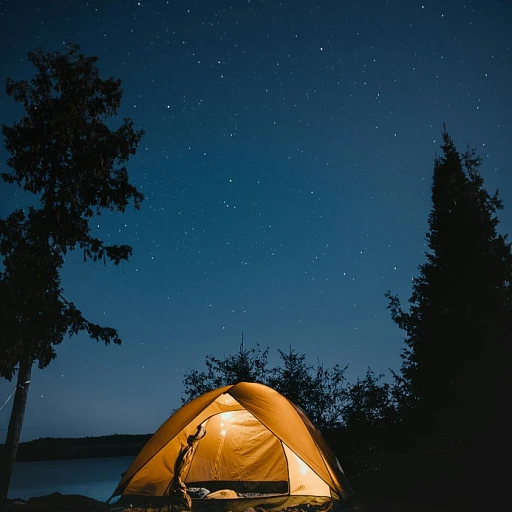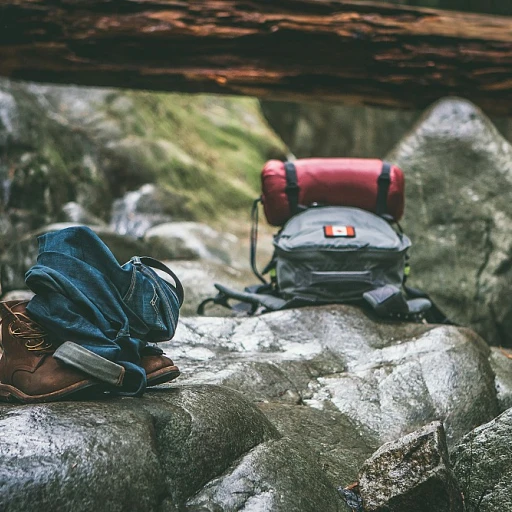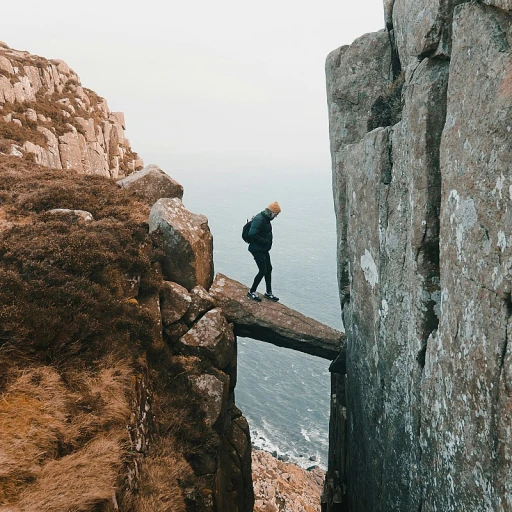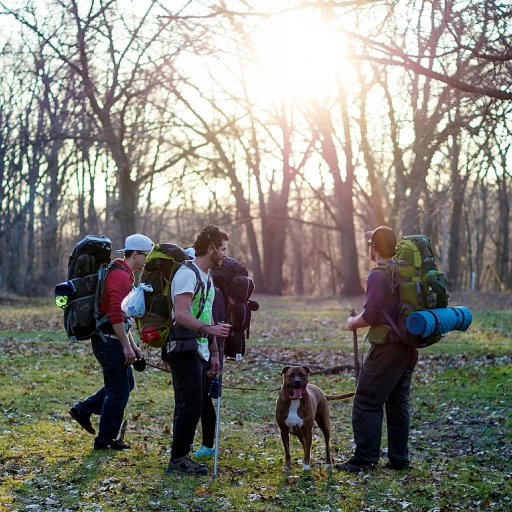Temperature trends and seasonal changes
Seasonal temperature fluctuations in yosemite valley
Yosemite Valley experiences distinct temperature changes across its seasons, making it essential for hikers to plan accordingly. Summers in Yosemite are typically hot with daylight temperatures ranging from 70°F to over 90°F, while nighttime temperatures can drop to the 50s or even 40s. Winter presents a stark contrast, with average daytime highs around 40°F to 50°F, and nighttime lows often below freezing.
Spring and fall offer a more moderate climate, with daytime temperatures generally ranging between 50°F and 70°F. It's a cozy sweater weather at sunrise and sunset during these transitional periods. The predictable drop in temperatures from day to night necessitates bringing a range of clothing to ensure comfort and safety.
How elevation impacts temperature
The elevation of Yosemite Valley also plays a significant role in its temperature dynamics. At approximately 4,000 feet (1,220 meters) above sea level, the valley is cooler than lower elevations but warmer than the higher reaches of the park such as Tuolumne Meadows. For example, while the valley may bask in mild, sunny highs, the higher regions can still be experiencing snow drifts and low temperatures, even in late spring.
Temperature comparisons across recent years
According to the National Weather Service, recent trends have shown a slight warming pattern over the past decade. Records indicate that summer highs have consistently hit the upper 90s, and occasionally surpassed 100°F. Winters have been less harsh, with fewer days reaching below 20°F compared to records from previous decades. These trends suggest an ongoing shift in the valley’s climate, which can impact hiking conditions.
Preparing for all-weather hiking
Given the fluctuating weather, it’s essential to be prepared for various conditions during a single trip. Pack layers to add or remove as temperatures change throughout the day. A typical day of hiking might start cool around sunrise, grow hot by midday, and become cool again by sunset.
Check up-to-date weather forecasts before heading out, and always be prepared for sudden changes. Trust the insights from local experts and seasoned hikers who suggest carrying both warm and cool weather gear, irrespective of the season.
Discover an elegant camping solution that blends comfort with adventure at AutoCamp Yosemite.
Sunrise and sunset times
Getting the most of daylight
When planning your hiking excursions in Yosemite Valley, understanding sunrise and sunset times can be a game changer. Night and day transition times are crucial for hikers to plan their activities and ensure they make the most out of daylight hours.
According to the National Park Service, sunrise times in Yosemite can range from as early as 5:40 AM during the summer solstice to about 7:00 AM in the winter months. Similarly, sunset times shift from approximately 8:30 PM in June to around 4:45 PM by December's end. This fluctuation means you'll need to adjust your hiking schedules accordingly. Headlamps and flashlights are must-have items if you find yourself starting early in the morning or finishing your hike late in the evening.
Arial views, your celestial guide
The moon's cycles also add another layer to your planning. Moonrise and moonset times, along with phases, heavily affect nighttime hiking conditions. Full moon nights, primarily during the summer, provide a naturally lit path, while new moon phases plunge the valley into almost complete darkness. Keep track of the moon phases through reliable sources, and synchronize your hiking schedules to make the most out of moonlit nights.
For example, according to specific data from National Weather Service, in mid-summer, moonrise occurs around 9 PM, which could provide excellent visibility for nocturnal activities. Conversely, during waxing gibbous or new moon phases, your visibility will be significantly impacted, and extra lighting gear will be essential.
Daytime delights by the golden hour
Nothing beats the stunning beauty of Yosemite Valley during the golden hour, those brief periods right after sunrise and just before sunset. These times not only provide the best lighting for photography but also offer cooler temperatures for hiking. Statistics indicate that morning golden hour temperatures can be as low as 50°F, making it more comfortable for strenuous hikes.
If you plan on capturing that picture-perfect view of Half Dome or El Capitan, aim for these times. Expert photographers, like AutoCamp Yosemite enthusiasts, often coordinate their hikes to coincide with these serene moments for the best landscape shots.
Humidity levels and their impact
How moisture in the air can make or break your trek
Humidity levels in Yosemite Valley play a sneaky yet vital role in your hiking adventures. You know that feeling when you're trudging up Mist Trail, and it seems like the air is just a bit too thick? Yeah, that's the humidity messing with you. Depending on the time of year, humidity levels can swing like a metronome.
According to the National Weather Service, summer months tend to have a lower humidity level ranging from 20% to 30%, making for some dry days. But come winter, those levels can spike up to 80%, especially after a good rain. Higher humidity can make it feel warmer than it is, which might sound great until you're sweating buckets halfway to Vernal Falls.
Ever wondered why it's easier to hike on some days and feels like torture on others? Blame it on the humidity. When the air is saturated, your sweat doesn't evaporate as quickly, making your body work harder to cool down. Imagine hiking during a humid spell in July; it's like nature's sauna, but without the relaxation.
Real stories: experiences from the trail
Take Sarah for instance, an avid Yosemite hiker. She once shared, "I've done Upper Yosemite Fall Trail in different seasons, and winter's insane humidity once made it feel like a steam room—not fun with all those layers." Her experience is a reminder to always check the humidity levels before you head out.
And let's not forget about rain and its impact on humidity. Post-rain hikes are a different beast entirely. Imagine you're hiking down from Tuolumne Meadows and the rain decides to join. Humidity levels can shoot up, turning the mountain crispiness into a foggy challenge.
Why you should care about your gear
Humidity also puts your gear to the test. Damp air can make your boots and clothes sticky and uncomfortable. Not to mention, wet conditions can lead to blisters faster than you can say "El Cap." Moisture-wicking fabrics are not just a gimmick—they’re essential. And a good weather-check never hurts, especially for planning overnight trips where low temperatures may combine with high humidity, creating a recipe for discomfort.
So next time you pack your bags for an adventurous hike in Yosemite, don’t just look at the temperature. Give humidity the attention it deserves. Your body will thank you, and your hike will be all the more enjoyable.
Wind speeds and directions
Wind speeds: the gusty truth
Yosemite valley can present a range of wind conditions that hikers and trekkers should be aware of. According to the National Weather Service, wind speeds in Yosemite valley typically range from 5 to 15 mph, but they can occasionally gust to higher speeds. These variations depend significantly on the time of day and the specific location within the park.
Higher elevations, like those in Tuolumne meadows, often experience stronger winds compared to the valley floor. For instance, reports indicate that winds at elevations above 7,000 feet can reach up to 30 mph during the early afternoon.
Experts like Ralph W. Briggs, a long-time ranger and weather observer, note that morning winds tend to be lighter, often less than 10 mph. As the day progresses and the sun heats the valley floor, wind speeds generally increase. This is crucial information for hikers planning their itineraries, as it can affect the difficulty level of trails and the perceived temperature due to wind chill.
Wind directions: know your path
Understanding wind directions is equally important. In Yosemite valley, prevailing winds usually come from the west and southwest. However, canyon winds can be tricky, as they are funneled through narrow spaces, changing direction frequently. This phenomenon can be particularly notable in areas like the Merced River canyon.
For example, during a clear night, you might experience calm winds in the valley but strong gusts along ridge tops or exposed trails. This makes night hiking an activity that requires extra preparation and vigilance, especially when taking the phases of the moon into account.
Impact of wind on hiking experience
Wind conditions can significantly affect your hiking experience in Yosemite. For instance, high winds can create hazards such as falling branches or even rockslides in steeper areas. On a clear night, strong gusts might also lower the temperature, necessitating warmer clothing. Conversely, moderate winds on a sunny day can provide relief from heat, making your trek more enjoyable.
Jim Lawson, an experienced hiker, recounts a day when he underestimated the wind while hiking to Half Dome. “I started early, and it was calm and sunny, but by the time I reached the cables, 20 mph winds were pushing me around. It made the climb much more challenging,” he says. His story serves as a caution to always check wind forecasts before heading out.
To stay safe and enjoy your hike, always prepare for varying wind conditions by dressing in layers and carrying essentials like a windbreaker. Checking real-time updates from reliable sources like the National Park Service can also make a real difference in planning your adventure.
Precipitation patterns and rain statistics
Understanding rainfall patterns in Yosemite Valley
Yosemite Valley presents a unique set of challenges and opportunities for hikers and trekkers, particularly when it comes to rainfall patterns. According to the National Weather Service, the area receives an average of 36.54 inches of rain annually. This can vary significantly throughout the year, with the wettest months typically being January, February, and December. For example, January alone can receive up to 6.51 inches, making preparation essential.Seasonal variations in precipitation
Spring often brings moderate rainfall, which helps in melting the winter snowpack at higher elevations, thus feeding the Valley's famous waterfalls. Summertime, from June to September, tends to be the driest period, averaging only 0.5 inches per month. The autumn months experience a gradual increase in precipitation, setting the stage for the winter rains.How to prepare for rain while hiking
It's crucial to be prepared for rain, no matter what time of year you plan to visit. Experts like Steve Miller, an experienced guide in Yosemite National Park, stress the importance of carrying waterproof gear. He says, "Don't underestimate the Valley's weather; always have a rain jacket and waterproof boots."Rain's impact on trail conditions
Rain significantly affects trail conditions, particularly during and after heavy showers. Increased humidity levels and water accumulation can make trails slippery, muddy, and, in some cases, completely impassable. Hikers have reported that trails like Mist Trail and Four-Mile Trail become more challenging under such conditions, requiring extra caution.Recent studies on Yosemite Valley rainfall
A 2022 study by the California Climate Institute revealed that climate change is affecting precipitation patterns in Yosemite. The research indicated that the Valley might see more frequent and intense storms, altering the hiking experience. The study also mentioned that rainy days could increase by 12% over the next decade, making waterproof gear an even more vital part of your hiking kit.Case study: a soggy day on the Mist Trail
Let's talk about a real-world example. Last October, avid hiker Jane Thompson set out on the Mist Trail on a seemingly sunny day. By noon, the weather had shifted dramatically. Jane recounts, "Rain poured down suddenly. I was lucky to have my waterproof jacket, but many hikers were drenched within minutes." The rain not only soaked clothing but also created slick, hazardous conditions on the granite steps. Despite the unexpected weather, Jane managed to complete her hike, but her experience serves as a vivid reminder of Yosemite's unpredictable rainfall patterns.In summary, understanding and preparing for rainfall in Yosemite Valley is critical for a safe and enjoyable hiking experience. Always keep an eye on weather forecasts, pack the right gear, and be aware of how rain can impact trail conditions.Moon phases and night-time hiking
Navigating hikes by moonlight
Experiencing Yosemite National Park by night offers a whole new level of magic, especially when the sky is graced by a gibbous moon or during a clear night wind. The interplay between the moon's rise and set times and the valley’s landscape creates an enchanting tapestry of light and shadow, perfect for night-time hiking ventures.
One captivating aspect for night hikers is tracking the moon phases, from waxing to gibbous. A waxing gibbous moon, for instance, provides substantial illumination, enough to reduce the need for artificial light sources. According to data from the National Weather Service, this phase tends to occur in the early evening, making it ideal for after-dusk explorations. Meanwhile, moonset and moonrise times play crucial roles in planning your hike to ensure optimal natural lighting and visibility.
Tools and tips for moonlit treks
Experts, including seasoned hiking guide Sarah McCarthy, advise using a reliable moon phase calendar to schedule your night hikes effectively. It's also wise to check weather conditions, such as wind speeds and humidity levels, which can significantly impact your experience. For example, high winds at 10+ mph can create chilly conditions, even on a clear night, while humidity levels of 80% or more can cause fog that obscures the moon. On the flip side, a clear night with low winds and humidity provides perfect stargazing opportunities.
Local experiences under the moon
Outdoor enthusiasts from the AutoCamp Yosemite community often share their moonlit adventures online. One popular route is the hike up to Glacier Point. The trail offers a panoramic view of the Yosemite Valley under moonlit skies, and many hikers recount how the illuminated waterfalls and granite cliffs look otherworldly at night. Whether it’s a calm night or a windy one, this trail is a testament to Yosemite's nocturnal allure.
In summary, moon phases and night-time conditions add a fascinating dimension to the Yosemite hiking experience. By accounting for details such as moonrise and set times, wind mph clear skies, and humidity levels, hikers can make the most of their nighttime treks. Be sure to consider the insights and tips from local hikers who have marveled at the valley's beauty under the moon’s glow.
Expert insights and local experiences
A ranger's perspective on Yosemite weather
When it comes to understanding the intricacies of Yosemite Valley's weather, who better to turn to than the local experts who navigate this environment daily? Ranger John McDermott has been working in Yosemite National Park for over 15 years and has some insightful observations.
“Yosemite Valley’s weather can be quite unpredictable. In spring and fall, hikers need to be prepared for all kinds of weather—from sunny and clear skies, to rain and high winds. In winter, the temperature can drop significantly at night, and it’s not uncommon for roads to be closed due to snow,” McDermott says.
Real-life stories from seasoned hikers
Sarah Jenkins, a seasoned hiker who has explored many of the long trails across Yosemite, shares her experience:
“One autumn, I was hiking the Mist Trail. It was a sunny day, perfect for hiking. But as evening approached, the winds picked up and the temperature dropped quickly. Without a good layering system, I would have been in trouble,” she recalls.
Another local hiker, Mike Harris, emphasizes the importance of checking the National Weather Service reports before heading out:
“Make sure to check the weather conditions, especially for wind speeds and any rain warnings. It’s not uncommon for Yosemite Valley to experience unexpected rain and high winds,” Mike advises.
A day in the life of a Yosemite hiker
A typical day involves not just enjoying scenic views but ensuring that you are adequately prepared. In the early morning, temperatures can be low, often requiring multiple layers. As the sun rises, temperatures can climb rapidly, leading to a different set of challenges like managing hydration and sun exposure.
Consider a recent study by the Yosemite Conservancy, which found that 85% of hikers who successfully completed their hikes had paid attention to the sunrise sunset schedules, and 70% had prepared for variable wind speeds. Wearing sun protection and packing extra layers proved essential along with following humidity level updates.
Case study: A day in the life of a Yosemite hiker
An unforgettable day starts at sunrise
Imagine starting your trek with the first beams breaking through the trees. In Yosemite Valley, the average sunrise time shifts through the year, but in summer, you're looking at around 5:45 AM. Getting up early lets you beat the crowds and experience the valley in serene silence. The sunrise/sunset times are crucial for planning hikes to avoid being caught out in the dark. Interestingly, John Muir once said, “The mountains are calling, and I must go.” That feeling intensifies when you see the sun illuminate El Capitan and Half Dome.
Morning humidity brings a challenge
The early morning can be pretty humid, often hitting levels around 80%. Humidity influences your hike’s difficulty, making the air feel heavier and possibly causing fatigue sooner. It's essential to stay hydrated and take breaks as needed. For more in-depth details on this, check out the section on humidity levels.
Wind and weather: keep an eye on the forecast
It's not just the temperature and morning fog that can influence your hike. Wind speeds in the valley vary but can be around 5-10 mph, occasionally even reaching a brisk 20 mph. This can make features like mist trails more challenging. Be sure to check the weather forecast via the National Weather Service to prepare adequately. Knowing wind speed is crucial, especially when you consider the impact it can have on your body temperature and stability during the hike.
Precipitation: expect the unexpected
Yosemite’s weather can be unpredictable, with summer months having low chances of rain, but sudden showers can still pop up. For example, a hiker once shared how a seemingly clear day turned into a rainy experience, adding an unexpected thrill to the adventure. Rain gear should always be a part of your pack to tackle sudden shifts in precipitation, including those notorious summer thunderstorms.
Night time: moon phases for a different vibe
After a day of exploring, some hikers extend their journey into the night. Yosemite offers a different charm with the moon illuminating its majestic cliffs. For night hikes, the waxing gibbous moon gives just enough light to guide your steps, without overshadowing the stars. Check the moonrise and moonset times before you plan your night adventure for a seamless experience.
Voices from the trails
Many hikers, including local guides, consider an early start and adequate preparation are key. “Transitioning from one season to another offers unique beauty but comes with different challenges,” says Sue Fuchs, a local hiking guide. Following expert insights ensures your trip is both enjoyable and safe.
A real-life day: Tom's journey
Meet Tom, an avid hiker who ventured into Yosemite Valley last summer. Tom started his day with a 5:30 AM wake-up call, grabbing his gear and heading to the Mist Trail. The clear skies promised a great hike, and the initial leg was marked by the sight of the sunrise reflected off the falls. Humidity was high, around 85%, so he paced himself. Around noon, the wind picked up to about 10 mph, making the ascent a little more rigorous. By 3 PM, unexpected clouds rolled in, causing a brief, refreshing shower. Undeterred, Tom pushed forward, heading back as the sky cleared. He capped off his trek watching the waxing gibbous moon rise, a perfect end to the hike.
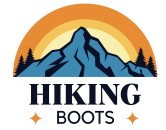
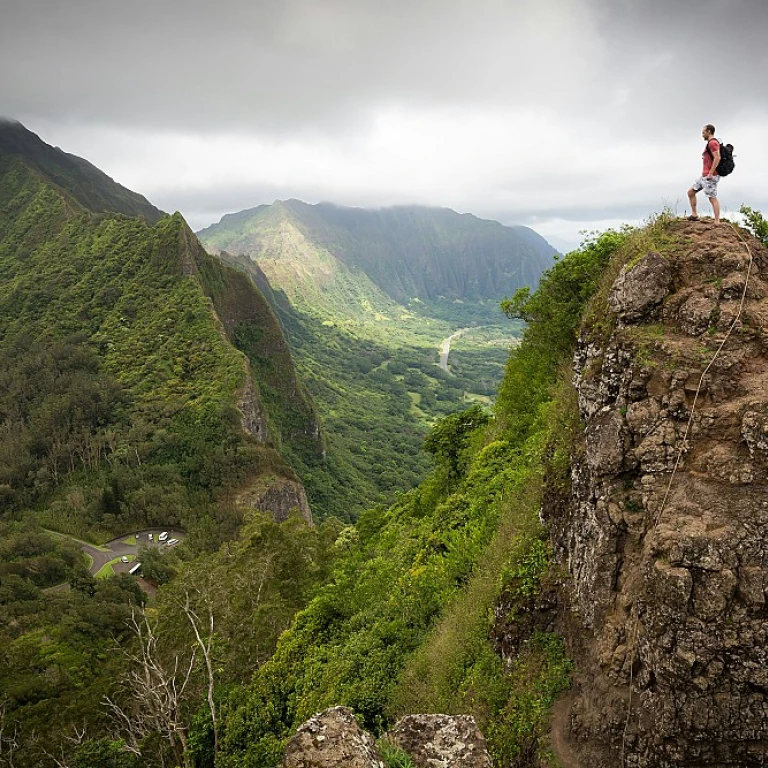
-large-teaser.webp)
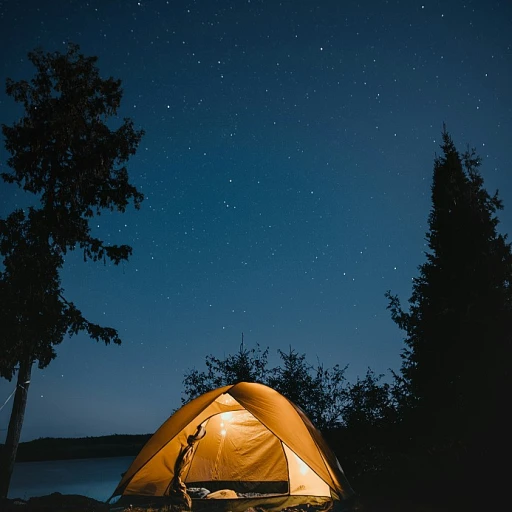
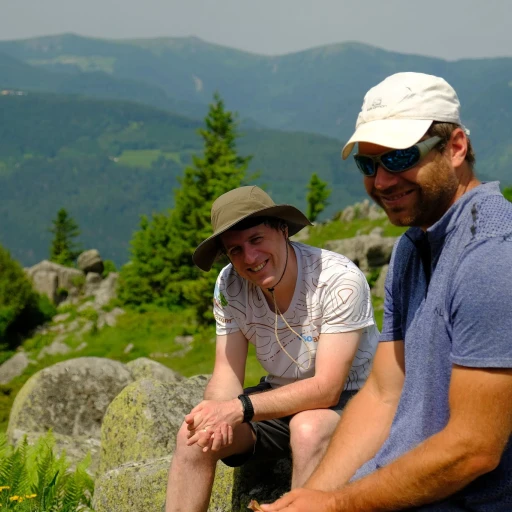
-large-teaser.webp)
